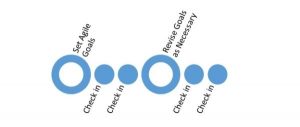The pool of capital that backs the stablecoin TerraUST has increased to nearly 40,000 Bitcoin (BTC) by the end of the weekend as a result of a series of purchases made by the Luna Foundation Guard (LFG) – the entity that oversees the reserves that back the digital asset.
The official Bitcoin address of TerraUST shows that a total of 4,130 new BTC tokens were added (April 12, 2022). As a result, the total number of BTC tokens surged to 39,897.98. These holdings are currently worth around $ 1.64 billion based on BTC’s market price this morning.
This latest acquisition reinforces the commitment of LFG to create a strong backing for its flagship stablecoin and was made only days after the project’s founder – Do Kwon – tweeted that they are getting ready to acquire as much as $ 10 billion in BTC tokens to “open a new monetary era of the bitcoin standard”.
Luna’s Bitcoin stash is getting closer to becoming the second largest institutional reserve of the digital asset as it is approaching Tesla’s portfolio of 48,000 BTC. Meanwhile, MicroStrategy – the firm headed by the controversial Bitcoin supporter, Michael Saylor – remains the largest institutional backer with a total of over 100,000 BTCs.
In addition to this recent BTC purchase, the backer of TerraUST also bought a total of $ 200 million of Avalanche (AVAX) tokens only days ago as part of its strategy to build a diversified fund holding different crypto assets to further strengthen the credibility of UST as a stablecoin.
Despite this sizable purchase, the value of Bitcoin kept declining during the weekend, moving from $ 42,252 per coin on Friday to $ 41,139 as of this morning.
Meanwhile, the value of LUNA – the native token used by the Terra network to absorb the volatility of Terra’s stablecoins – has gone down from $ 94.55 per coin as of last Friday to $ 86.34 this morning for an 8.6% 3-day loss.
What is Terra?
Terra is a layer-1 ecosystem through which developers can launch algorithm-backed stablecoins through the use of smart contracts.
Even though the protocol works similarly to Ethereum, its primary goal is to support the creation of these algorithmic stablecoins. These are digital assets whose value is pegged to that of other currencies (digital or fiat) and that can be easily traded through the Terra blockchain.
Terra’s flagship stablecoin is UST, a digital asset whose value is pegged to the US dollar. To strengthen its credibility as a mean of exchange, the Luna Foundation Guard (LFT) – a non-profit institution that oversees the proper functioning of UST – established protocols that ensure that every UST token is backed by one USD.
However, Luna does not own any fiat currencies to achieve this goal. Instead, UST is backed by a pool of crypto assets such as Bitcoin (BTC).
Is Luna the Future of Stablecoins?
Stablecoins have been created to facilitate the process of moving assets into and within the blockchain while reducing price volatility for investors at the same time. In the case of UST, since the value of the token is pegged to a robust fiat currency – the US dollar – investors can safely stake their holdings within the blockchain to earn interest without exposing their principal to the price volatility of non-stable digital assets.
There has been skepticism in regards to the functioning of these stablecoins amid their relatively obscure balance sheets and often unsubstantiated claims.
However, TerraUST is aiming to become the most transparent stablecoin in the ecosystem by allowing users to audit its on-chain reserves at any time. This is achieved by publicly disclosing the project’s official wallet addresses, which contain the different tokens that back the digital asset.
Luna’s ambitious plan to build a $ 10 billion reserve for UST has put the project on the map as achieving this goal could lead to further adoption of digital assets by corporations and individuals for settling transactions through the blockchain.
Your capital is at risk.
Business 2 Community(24)






